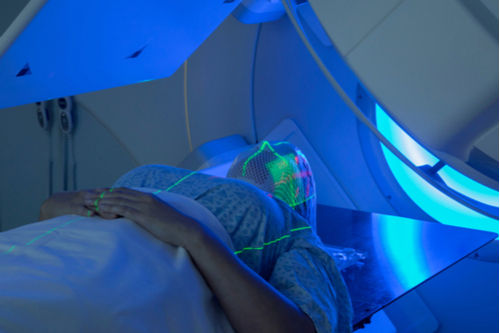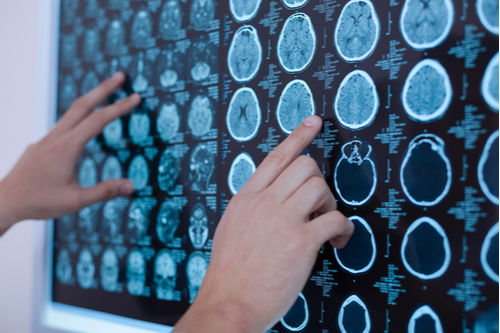General Health
Not All Brain Tumours Are Cancerous! Know When to Worry?
5 min read
By Apollo 24|7, Published on - 08 June 2022, Updated on - 18 October 2022
Share this article
0
7 likes

The very mention of ‘brain tumour’ is enough to send a chill down the spine. The fear associated with the term has a lot to do with the misconceptions that have come to surround it. It is important to note that not all brain tumours are malignant (cancerous). In fact, most brain tumours are benign (non-cancerous) in nature. This World Brain Tumour Day, we explain the difference between malignant and benign brain tumours in detail below.
What is a brain tumour?
A brain tumour can be defined as an abnormal mass or growth of cells inside the brain. The structure of the brain is quite complex, therefore different regions of the brain are responsible for different functions. Any abnormal growth of cells inside the restricted cranial cavity can increase the pressure on surrounding nerves, blood vessels, and tissues. The increased pressure caused by a tumour can impair brain function and lead to life-threatening complications.
What are the symptoms of a brain tumour?
The signs and symptoms of a brain tumour depend on its type, size, location, and rate of growth. However, some of the common ones include:
- Frequent headaches that are generally more severe in the morning

- Chronic fatigue or tiredness
- Nausea and vomiting
- Seizures
- Vision problems such as blurred or double vision
- Hearing loss
- Facial numbness, usually on one side
- Slurring of speech
- Weakness in an arm or leg
- Confusion and disorientation
- Difficulty in maintaining balance
- Changes in personality and behaviour
What causes a brain tumour?
Doctors are yet to determine what stimulates the formation of tumour cells in the brain. It is suspected that brain tumours form when specific genes on the chromosomes of a cell are damaged and unable to function normally. However, there are certain factors that are linked to an increased risk of developing brain tumours, such as:
- Age: The risk of developing brain tumours increases with age. It is especially high for people aged between 65 and 79 years.
- Radiation exposure: People who have been exposed to ionizing radiation from cancer radiation therapy or radioactive fallout from nuclear explosions are at higher risk of developing brain tumours.

- Family history: Inherited genetic syndromes such as neurofibromatosis, Turcot syndrome, Gorlin syndrome, and Li-Fraumeni syndrome (TP53 gene) are linked to an increased risk of brain tumours.
- No history of chickenpox: According to a study, people who have had chickenpox have a 21% reduced risk of developing glioma.
How to determine if a brain tumour is fatal?
Brain tumours are broadly categorized as benign (non-cancerous) and malignant (cancerous).
1. Benign Brain tumours
These tumours are usually non-cancerous and don’t spread to other tissues. They have distinctly defined borders which makes it easier to remove them surgically. While they are mostly not aggressive, benign brain tumours can still cause serious and possibly life-threatening complications. They can trigger inflammation and also increase pressure on the nearby brain tissues and within the skull. Once removed, benign tumours rarely come back, however, the possibility of re-emergence still exists. Some of the common types of benign tumours are schwannomas, chordomas, craniopharyngiomas, gangliomas and anaplastic gangliogliomas.
2. Malignant Brain tumours
These tumours are aggressive cancers that begin in the brain, grow faster than benign tumours and rapidly attack surrounding tissues. In many cases, the malignant tumours originate as cancer elsewhere in the body and then spread to the brain. While it is rare for brain cancer to proliferate to other organs, it can affect other parts of the brain and central nervous system. Some of the most common types of malignant brain tumours are gliomas, ependymomas, medulloblastomas, and glioblastoma multiforme (GBM).
How to know if you have a brain tumour?
Your physician or neurologist will ask certain questions about your symptoms, overall health, medical history, and family history. They may conduct a neurological exam which may include an assessment of your vision, hearing, physical balance, muscle strength, reflexes, and coordination. To confirm the diagnosis, the doctor may advise some tests, which include:
- Imaging tests: Tests such as magnetic resonance imaging (MRI), computerized tomography (CT) and positron emission tomography (PET) will be recommended to view detailed pictures of the brain.

- Biopsy: In some cases, a biopsy may be performed to determine the type of tumour and if it’s cancerous or not. The procedure involves drilling a small hole in the skull, inserting a small needle through the hole, and removing a small sample of the tissue. The tissue is then examined carefully under a microscope.
Can a brain tumour be treated?
The treatment of brain tumours depends on the type, size, location, and malignancy of the tumour.
1. Surgery: If the tumour is easily accessible, then a surgeon will remove it as much as possible without causing damage to the surrounding healthy tissues. However, if the tumour is located deep inside the brain, then surgery may be risky. In such cases, radiation therapy and chemotherapy may be used to kill the tumour cells.
2. Rehabilitation: Since tumours can occur in regions of the brain responsible for speech and language, vision, thinking, and motor skills, rehabilitation may become necessary after treatment. Depending on the need of the patient, physical therapy, occupational therapy, and speech therapy could be recommended.
Not all brain tumours are life-threatening. Therefore, to identify the type of tumour, a neurologist will recommend diagnostic tests such as MRI, CT scan, and biopsy. Once diagnosed, the neurologist will decide whether surgery, radiation therapy, chemotherapy or a combination of these is required to treat the brain tumour.
Need more information?
General Health
Leave Comment
Recommended for you

General Health
What to Expect From an Online Doctor Consultation?
Discover the convenience and benefits of online doctor consultations. Learn about the entire process and the latest technologies involved that make virtual healthcare a viable option for everyone.

General Health
Signs and Symptoms of Vitamin D3 Deficiency: Know What To Look Out For
Vitamin D deficiency is a common condition that can lead to various symptoms and health issues. This article explores the importance of vitamin D, signs of deficiency, risk factors, sources of vitamin D, measurement of vitamin D levels, prevention tips, and potential consequences of untreated deficiency.
.jpg?tr=q-80)
General Health
Shingles
Delve into the world of shingles with our comprehensive guide. Learn about the causes, symptoms, and diagnosis of this viral infection, and explore the available treatment options, including antiviral medications and pain relief techniques. Discover the importance of the shingles vaccine and preventive measures to protect yourself. Gain valuable insights into living with shingles and managing its complications effectively.
Subscribe
Sign up for our free Health Library Daily Newsletter
Get doctor-approved health tips, news, and more.
Visual Stories

Plant-based Foods That Are a Great Source of Iron
Tap to continue exploring
Recommended for you

General Health
What to Expect From an Online Doctor Consultation?
Discover the convenience and benefits of online doctor consultations. Learn about the entire process and the latest technologies involved that make virtual healthcare a viable option for everyone.

General Health
Signs and Symptoms of Vitamin D3 Deficiency: Know What To Look Out For
Vitamin D deficiency is a common condition that can lead to various symptoms and health issues. This article explores the importance of vitamin D, signs of deficiency, risk factors, sources of vitamin D, measurement of vitamin D levels, prevention tips, and potential consequences of untreated deficiency.
.jpg?tr=q-80)
General Health
Shingles
Delve into the world of shingles with our comprehensive guide. Learn about the causes, symptoms, and diagnosis of this viral infection, and explore the available treatment options, including antiviral medications and pain relief techniques. Discover the importance of the shingles vaccine and preventive measures to protect yourself. Gain valuable insights into living with shingles and managing its complications effectively.